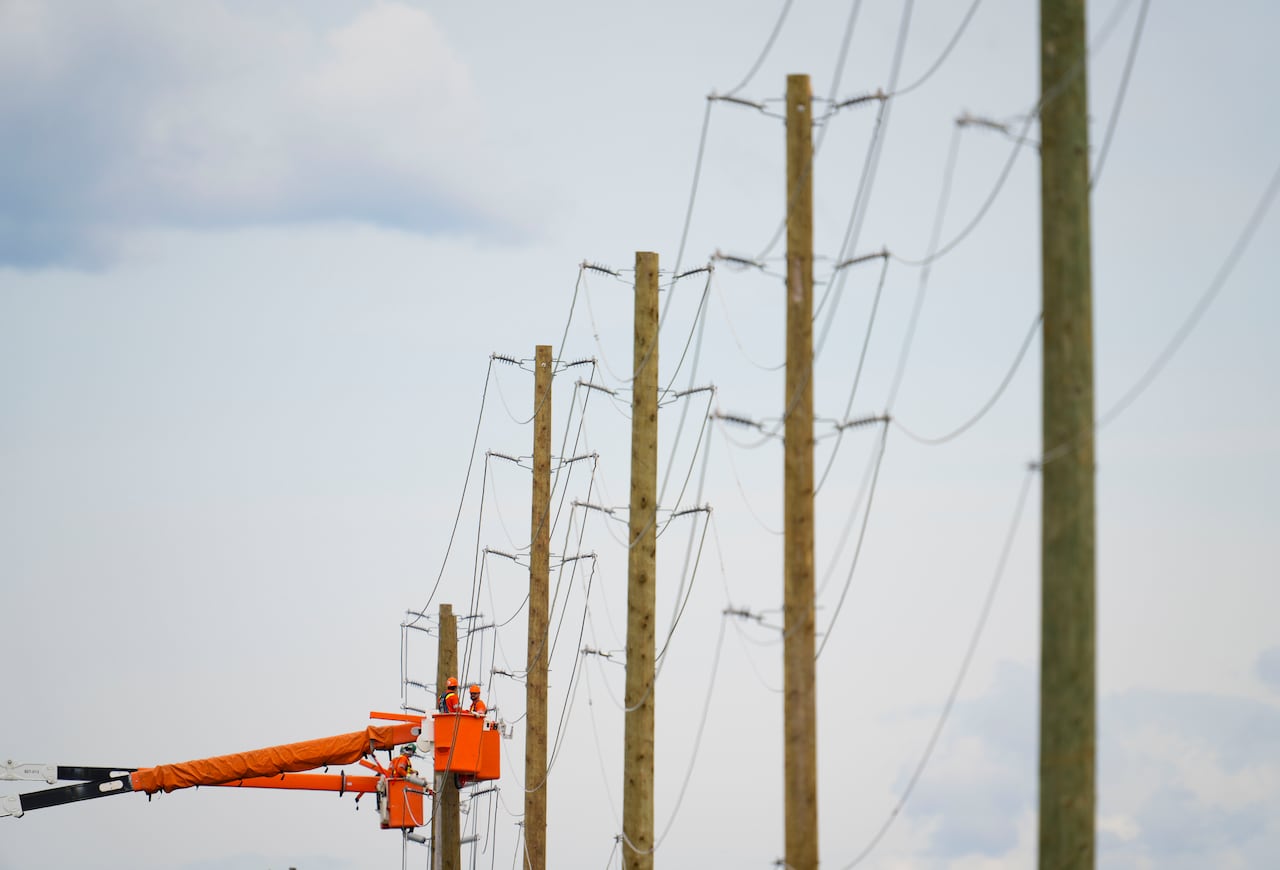
SHORTAGE OF WOODEN HYDRO POLES THREATENS RELIABILITY OF GRID, SAY ELECTRICITY PRODUCERS
In a newly published report, electricity providers across the country warn a looming shortage of wooden utility poles is threatening the reliability of Canada's electricity grid.
That warning comes just as Ottawa invests billions of dollars in expanding transmission and production to meet the demands of a net-zero emissions economy by 2050.
The problem stems from a Health Canada decision to ban pentachlorophenol (PENTA), a chemical pesticide used to protect and preserve some utility poles, without approving an alternative treatment to take its place.
"An orderly phase-out of [PENTA] could have been planned alongside a scale-up of alternatives," says a new report from Electricity Canada, the industry association representing energy companies.
"That didn't happen and it will ultimately adversely affect Canadians who rely on electricity that is carried over utility poles. In two years, the ban on [PENTA] will come into effect — and the reliability of the electricity grid could be in jeopardy."
Last April, Ontario's Minister of Energy Todd Smith wrote to then-federal health minister Jean-Yves Duclos to say that while the province understands the logic behind the ban on PENTA, the federal government should have planned for alternatives.
"While several oil-borne wood preservatives that can serve as alternatives to PENTA are available in other countries, they have either not been approved by Health Canada or are not easily accessible in Canada," Smith wrote.
The minister said some options, such as the organic compound dichlorooctylisothiazolinone (DOCIT), have been approved in the U.S. since 2018. Smith said another alternative, creosote, is in short supply because of the war in Ukraine.
"Our province is threatened with a major shortfall of utility poles that would jeopardize the supply of electricity with serious repercussions for Ontarians," Smith said in his letter.
Palmer Lockridge, Smith's deputy chief of staff, told CBC News in an email that although the minister sent the letter almost a year ago, he has yet to receive a response. CBC News asked Health Minister Mark Holland's office for an explanation but has yet to hear back.
The threat of severe climate events
Wooden utility poles in Canada come from new-growth forests and take about 30 years to grow, said Mike Powell, Electricity Canada's vice president of government relations.
Not all wooden poles are treated with oil-based chemicals like PENTA. Some are coated with water-based treatments, but it very much depends on the kind of wood used.
Powell said Douglas fir poles, widely used in Saskatchewan and Atlantic Canada, can only be treated with an oil-based product.
In the United States, about half of all wooden utility poles are treated with PENTA. Powell said he was unsure of the number of PENTA-treated poles in Canada but said it was in the range of "several dozen percentage points" of the total.
Electricity Canada says energy transmission companies replace up to 100,000 wooden utility poles across Canada annually, but recent catastrophic climate events have been pushing that number up.
"Unfortunately, with climate change, we're going through utility poles far faster than we ever have before," said Electricity Canada's report.
The report says a derecho — a massive thunderstorm — that ripped through the Quebec City-Windsor corridor in 2022 destroyed 3,000 wooden poles. Last year, roughly 6,000 wooden utility poles were destroyed by wildfires across the country.
The last federal budget said that in order for Canada to reach its net-zero emissions goal by 2050, Canada's electricity demand must double and grid capacity must increase by up to 3.4 times over current levels.
"Put simply, Canada's economic prosperity depends on significant investments today in building a sustainable, secure, and affordable electricity grid," the budget document said.
"We will expand Canada's electricity grid, connect it from coast-to-coast-to-coast, and ensure that Canadians and Canadian businesses have access to cleaner and cheaper energy into the next century."
The push for alternatives
In 2014, a United Nations expert committee recommended the global elimination of PENTA, which is also used to preserve railway ties, because of its "toxic impacts."
When the U.S., Environmental Protection Agency (EPA) announced its ban in Feb. 2022, it said that because of the availability of alternatives, "the risks pentachlorophenol poses to workers' health outweigh the benefits of its use."
The alternatives the EPA said were approved for use in the U.S. include DOCIT, copper naphthenate, chromated arsenicals and creosote. Even with those alternatives already available, the EPA gave the industry a five year phase-out period.
When Health Canada's Pest Management Regulatory Agency announced its ban in Oct. 2022, it initially gave industry only a one-year phase-out period.
Electricity Canada worked with the government to extend that deadline to 2026, to give utilities the ability to use their stockpiles of PENTA-treated utility poles. Those stockpiles are running low.
Electricity Canada says there are only about 50,000 PENTA-treated poles left in surplus and the only viable solution is to approve new treatments quickly.
"There are multiple alternatives that are approved … in the United States and you know it seems that we should make sure that we're offering the same sort of things to make sure that we have as reliable and safe a grid as we can," Powell said.
CBC News asked Health Canada for an update on where the approvals stand for alternative treatments, but has yet to receive a response.
2024-03-26T19:53:50Z dg43tfdfdgfd